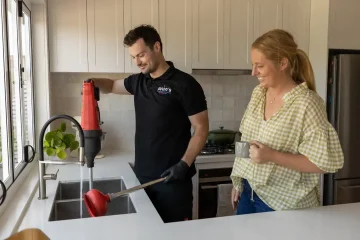Introduction:
Electrical wiring issues can be daunting, but with the right knowledge and precautions, you can effectively repair them. Whether it’s fixing a faulty outlet or replacing damaged wires, understanding the basics of electrical repair is crucial for safety and functionality. In this guide, we’ll delve into the step-by-step process of repairing electrical wiring safely and efficiently.
Safety First:
- Before you begin any electrical repair work, ensure your safety and the safety of others by taking the following precautions:
- Turn off the power: Always switch off the circuit breaker or disconnect the power source before working on electrical wiring.
- Use proper tools: Invest in insulated tools designed for electrical work to prevent shocks.
- Wear protective gear: Use gloves, safety goggles, and non-conductive footwear to protect yourself.
- Test the wires: Use a voltage tester to ensure wires are not live before touching them.
Identify the Problem:
- Diagnose the issue accurately before proceeding with the repair. Common electrical wiring problems include:
- Dead outlets or switches
- Flickering lights
- Overloaded circuits
- Exposed or damaged wires
Gather Materials:
- Once you’ve identified the problem, gather the necessary materials for the repair:
- Replacement wires (if needed)
- Wire strippers
- Electrical tape
- Wire nuts
- Screwdriver
- Voltage tester
- Wire connectors
Repairing Dead Outlets or Switches:
- If an outlet or switch is not working, follow these steps to repair it:
- Turn off the power to the affected circuit.
- Remove the cover plate and outlet/switch from the electrical box.
- Check for loose or disconnected wires.
- If wires are damaged, cut and strip the insulation, then reconnect using wire nuts.
- Test the outlet/switch with a voltage tester before reassembling.
Fixing Flickering Lights:
- Flickering lights can be caused by loose connections or faulty wiring. Here’s how to fix them:
- Turn off the power to the light fixture.
- Remove the fixture cover and check for loose wires.
- Tighten any loose connections and replace damaged wires if necessary.
- Test the light fixture before reattaching the cover.
Dealing with Overloaded Circuits:
- If you frequently experience tripped circuit breakers due to overloaded circuits, take these steps:
- Identify the appliances or devices causing the overload.
- Distribute the load by using multiple circuits or upgrading to a higher amp circuit breaker.
- Consider consulting a licensed electrician for professional advice and installation.
Repairing Exposed or Damaged Wires:
- Exposed or damaged wires pose a safety hazard and should be repaired immediately:
- Turn off the power to the affected area.
- Cut out the damaged section of wire using wire cutters.
- Strip the insulation from the ends of the remaining wire.
- Connect the new wire using wire nuts and secure with electrical tape.
- Test the repaired connection before restoring power.
Testing and Safety Checks:
- After completing the repairs, conduct thorough testing and safety checks:
- Test outlets, switches, and lights with a voltage tester to ensure they are functioning properly.
- Check for any signs of overheating, burning smells, or abnormal behavior.
- Verify that all electrical connections are secure and insulated.
Seek Professional Help When Needed:
- While many electrical repairs can be done safely by DIY enthusiasts, complex issues or extensive wiring problems may require professional assistance. Don’t hesitate to contact a licensed electrician for expert advice and service.
Conclusion:
Repairing electrical wiring is a task that requires caution, knowledge, and the right tools. By following the steps outlined in this guide and prioritizing safety, you can tackle common wiring issues effectively and ensure a safe electrical system in your home or workspace. Always remember to turn off the power, use proper protective gear, and seek professional help for complex problems.




